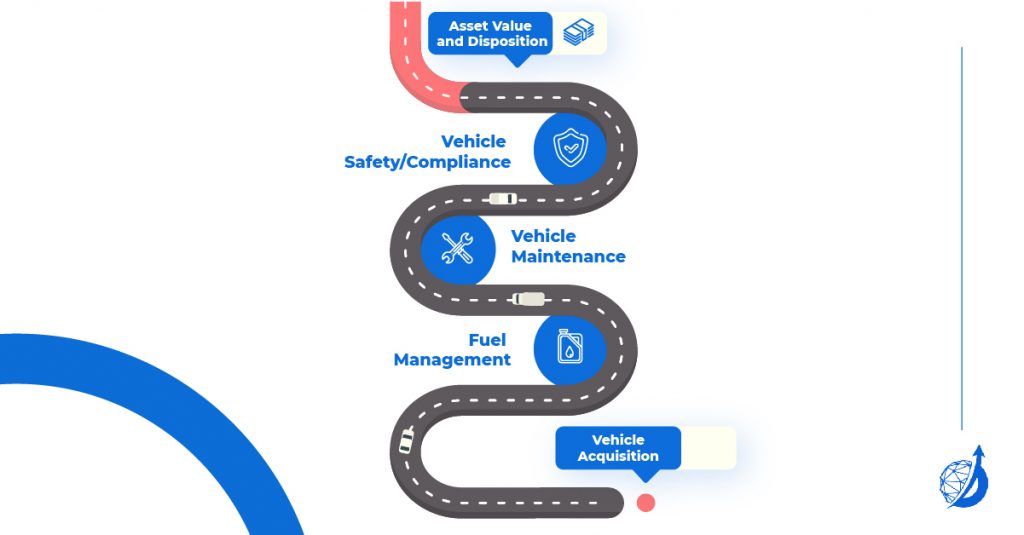How Are You Calculating Your Fleet’s True TCO?

It’s hard to think of a term more ingrained in the fleet manager’s lexicon than Total Cost of Ownership (TCO). And for good reason: if you know your TCO, you know what you’re really spending per asset. That data opens the door to optimizations that can raise your value–and lower your TCO–even further
But what if you don’t know your TCO? You’re not alone. This is one of the biggest questions we hear from our clients, and it’s not surprising given all the complexities of calculating this golden number. If you’re unsure how to calculate your TCO per asset, then it might make sense to work with a fleet management partner who can help you cut through the confusion. But if you’re determining it on your own, use this list as a starting point.
Key components of your TCO
One simple way to calculate your TCO is to trace an asset’s journey from acquisition through remarketing. By taking this approach, you’ll hit the big milestones (think: purchase price and fuel costs). But if you zoom into the granular level, you’ll also find a number of overlooked items that contribute to the true cost of your fleet’s vehicles. They might seem small on their own, but they can quickly add up.
You’ve probably already considered these high-level TCO factors.
- Acquisition cost
- Historical fuel cost
- Historical maintenance cost
- Remarketing price
But to calculate your true CTO, you need to get more granular.
Acquisition
- Financing (interest rate, carrying costs, term and ultimately, the cost of capital)
- Depreciation
Operations
- Driver recruiting and retention costs
- Driver rate (including overtime and payroll processing costs)
- Internal maintenance and repair (parts and labor costs)
- External maintenance and repair (parts and labor costs)
- Increase in maintenance costs as the vehicle ages
- Fuel economy depreciation as the vehicle ages
- Breakdowns (including the cost of replacement vehicles, roadside service and fueling service)
- Downtime costs
- Regulatory costs
- Insurance and licensing costs
- Technology costs (telematics, GPS, software and more; however, keep in mind that when used properly, these investments can actually help you reduce your TCO)
- Vehicle administration costs
Remarketing
- Disposal (value and costs)
- Taxes
After you’ve accounted for the details above, consider any unique fleet attributes that affect your TCO. If you’re managing a truck fleet, for example, the weight and type of load are critical. Energy fleets have specialized maintenance needs that should be accounted for from the start.
The role of accurate data in calculating TCO
As the digital transformation continues to accelerate, fleet managers have access to more data than ever. But collecting data isn’t the same as analyzing it. In one study, 78% of truck fleet managers could accurately provide their vehicle’s purchase price. However, when moving beyond the sticker price, the numbers quickly trailed. Less than one third knew their cost of capital, and only 27% could provide their fleet’s administrative costs. What’s the takeaway here? Knowing your numbers is key. Given the challenges of analyzing and interpreting data, it’s not surprising that fleet managers are increasingly partnering with solution providers who have the combination of big data and fleet expertise required to come to an accurate figure.
When you’re busy managing your fleet, calculating the TCO might seem like more trouble than it’s worth. Or maybe you simply don’t have visibility into the data you need to calculate it. But either way, here’s the bottom line: What gets measured gets optimized, and an optimal TCO provides benefits through every stage of your asset’s life cycle.
If you need help determining what you’re really spending per asset, let Onward guide you. We’ll use a data-driven approach and robust fleet management experience to calculate an accurate TCO for your assets. Then, we’ll help you identify new areas for optimization–and implement them to keep your TCO continually moving in the right direction.

[…] thing about fleet management, it’s this: hitting “cruise control” isn’t going to help you optimize your total cost of ownership (TCO) or enhance your efficiency. Simply put, the best-performing fleets are the ones that are optimized […]